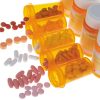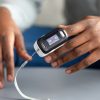- Empty cart.
- Continue Shopping
How to Use a Nebulizer for Respiratory Issues

A nebulizer is a medical device commonly used to administer medication in the form of a mist to treat various respiratory conditions like asthma, chronic obstructive pulmonary disease (COPD), and bronchitis. It’s a convenient and effective way to deliver medication directly to the lungs, providing quick relief from symptoms.
Understanding the Nebulizer Components
Before you start using a nebulizer, it’s essential to familiarize yourself with its components:
- Nebulizer Machine: The main unit that pumps air to create the mist.
- Nebulizer Cup: A small container that holds the medication.
- Mouthpiece or Mask: The part through which you inhale the medication.
- Air Compressor Tubing: Connects the nebulizer machine to the nebulizer cup.
Preparing the Nebulizer
Step 1: Wash Your Hands
Always begin by washing your hands thoroughly with soap and water to minimize the risk of infection.
Step 2: Assemble the Nebulizer
Connect the air compressor tubing to the nebulizer machine and the nebulizer cup. Attach the mouthpiece or mask to the nebulizer cup.
Step 3: Add Medication
Pour the prescribed amount of medication into the nebulizer cup. Always follow your healthcare provider’s instructions regarding dosage.
Using the Nebulizer
Step 4: Turn On the Machine
Plug in the nebulizer machine and turn it on. You should see a mist coming out of the mouthpiece or mask.
Step 5: Administer the Medication
Place the mouthpiece in your mouth or put on the mask, making sure it fits securely. Sit up straight and breathe in deeply and slowly through your mouth, allowing the medication to reach your lungs.
Step 6: Continue Until Empty
Continue inhaling the medication until the nebulizer cup is empty, which usually takes about 5 to 10 minutes.
Step 7: Turn Off the Machine
Once the medication is administered, turn off the nebulizer machine.
Cleaning and Maintenance
Step 8: Disassemble and Clean
After each use, disassemble the nebulizer components and wash them with warm soapy water. Rinse thoroughly and allow them to air dry.
Step 9: Regular Maintenance
Periodically check the nebulizer machine and tubing for any signs of wear and tear. Replace parts as needed.
Precautions and Tips
- Always consult your healthcare provider for the correct medication and dosage.
- Keep the nebulizer clean to prevent bacterial growth.
- Do not share your nebulizer with others to avoid cross-contamination.
Alternative Approaches
Using a Spacer with an Inhaler
If you don’t have access to a nebulizer, a spacer can be used with a metered-dose inhaler to achieve similar effects.
Portable Nebulizers
Battery-operated portable nebulizers are available for those who need to administer medication on the go.
Finally, Using a nebulizer for respiratory issues can provide quick and effective relief when done correctly. By understanding the components, following the steps for preparation and use, and maintaining the device properly, you can manage how to use a nebulizer for respiratory issues.








